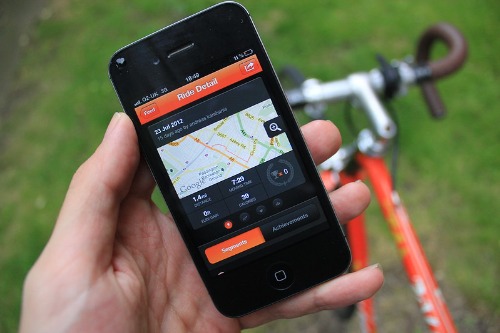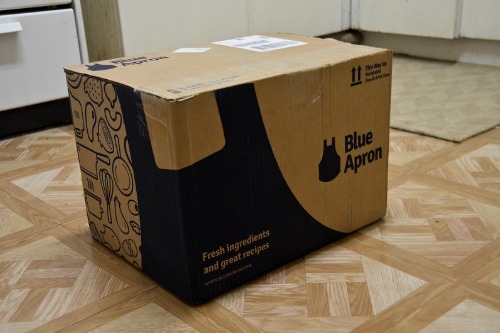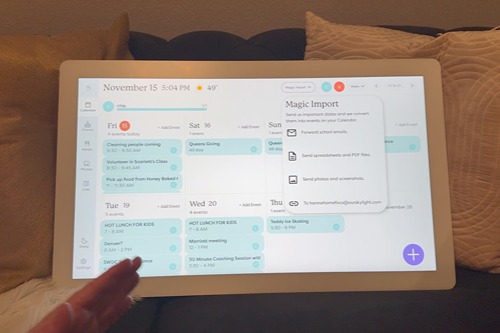1. Online Fitness Communities

Apps like Peloton, FitOn, and Strava are creating virtual workout groups that extend beyond gyms. People are connecting with others for motivation, tracking progress, and joining challenges without leaving home. This trend makes exercise social, competitive, and accessible at the same time. Families and roommates are even participating together, fostering a culture of home-based wellness.
It’s more than just fitness—it’s about accountability and belonging. Online communities provide encouragement that was once limited to in-person classes. As a result, domestic routines now often include shared digital wellness practices. The home has become a hybrid space for physical and social activity.
2. Rise of Smart Home Assistants

Voice-activated devices like Alexa, Google Home, and Siri are quietly changing how we manage daily tasks. People are now asking their devices to play music, adjust lighting, and even order groceries without lifting a finger. These assistants are also making routines more efficient, from setting reminders to controlling smart thermostats. Over time, they’re becoming the central hub for household management.
The trend is subtle because it doesn’t always involve flashy technology; it’s about convenience and integration. Families are using these assistants to coordinate schedules and manage chores, which can reduce household friction. Even elderly family members are embracing smart assistants for reminders and emergency alerts. This quiet integration is reshaping the concept of “domestic efficiency.”
3. Subscription Meal Services

Subscription meal kits like HelloFresh and Blue Apron are changing how families plan and cook their meals. People are getting fresh ingredients and recipes delivered weekly, which saves shopping time and reduces food waste. It’s also encouraging home cooking in a way that feels approachable rather than intimidating. The result is a subtle shift toward more intentional eating habits.
The convenience factor is huge—families can plan meals around their busy schedules without compromising nutrition. Some services even cater to specific diets, from keto to vegan, which makes healthy eating more accessible. Over time, these services are shaping how people think about meal prep, grocery shopping, and food education. For many households, it’s quietly becoming a staple of daily life.
4. Social Media Home Inspiration

Platforms like Pinterest, Instagram, and TikTok are influencing interior design choices more than traditional magazines ever did. People now pull decorating ideas, DIY hacks, and organization tips directly from social feeds. Home aesthetics are evolving rapidly because trends spread faster online than in print. This is turning homes into micro-reflections of personal style informed by digital communities.
Even small decisions, like wall colors or furniture layouts, are influenced by viral content. Families are more willing to experiment because they can see “proof” of a design working in real homes. This has turned domestic spaces into ongoing projects rather than static setups. The digital influence on physical space is subtle but widespread.
5. Streaming Everything

Streaming platforms like Netflix, Disney+, and Hulu have fundamentally changed evening routines. Families are curating watchlists instead of waiting for broadcast schedules. Binge-watching has become a common bonding activity, influencing conversations and even mealtime planning. The way we consume entertainment is now highly personalized and on-demand.
Beyond movies and TV shows, streaming affects music, podcasts, and even fitness videos. Homes are now entertainment hubs that cater to individual tastes simultaneously. The quiet transformation here is in time management and leisure habits. Digital streaming is subtly controlling how families relax and spend free time.
6. Home Office Normalization

Remote work has become a fixture in many households, with video calls and cloud tools replacing daily commutes. This shift has changed how living spaces are organized, often requiring dedicated work nooks. People are investing in ergonomic furniture, soundproofing, and reliable internet connections. The domestic environment is now optimized for productivity as much as comfort.
Remote work also influences family dynamics—parents juggle childcare and meetings, while roommates share space differently. It’s redefining schedules, mealtime planning, and even social interactions within the home. The line between professional and domestic life is blurrier than ever. This quiet transformation is altering the rhythms of domestic life in lasting ways.
7. E-Commerce Home Shopping

Online shopping has replaced many in-store experiences, from furniture to kitchen gadgets. People can compare prices, read reviews, and have products delivered in days, which makes planning a home easier. The convenience of doorstep delivery reduces trips to stores and changes how homes are stocked. Families can experiment with decor or tools without long-term commitments.
It’s also affecting sustainability practices, as more people adopt returns and recycling strategies. Bulk online purchases are influencing storage solutions and pantry management. The ease of digital shopping subtly reshapes household organization and consumption patterns. This trend quietly shifts the logistics of everyday domestic life.
8. Digital Family Calendars

Apps like Google Calendar and Cozi help families coordinate schedules in real-time. Parents can track appointments, kids’ activities, and meal plans in one place. The ability to share calendars reduces miscommunication and makes planning more transparent. Over time, households are relying less on paper planners and sticky notes.
These calendars also integrate reminders, shopping lists, and even birthdays. They create a shared digital space that organizes family life efficiently. Technology is subtly taking over what was once a manual task, streamlining domestic coordination. Families now have a central hub for planning that keeps everyone on the same page.
9. Online Education for Kids

Platforms like Khan Academy, Outschool, and ABCmouse offer supplemental learning outside the classroom. Parents can tailor lessons to their children’s pace and interests, which changes how kids engage with education at home. This trend supports homeschooling, tutoring, and enrichment activities in ways that were harder to achieve pre-digital. It’s quietly influencing how parents structure learning time.
Access to online educational resources also encourages lifelong learning habits in children. Families are integrating digital learning into daily routines, from bedtime story apps to science experiments. The domestic learning environment is becoming more interactive and personalized. This subtly redefines how homes support growth and intellectual development.
10. DIY and Maker Culture

YouTube, TikTok, and Etsy have fueled a revival in DIY projects and maker culture. Families are creating home décor, clothing, and gadgets, often with digital instructions or 3D printing. This movement encourages creativity, reduces reliance on mass-market products, and adds a personal touch to living spaces. The home becomes a workshop for skill-building and experimentation.
People are also documenting their projects online, creating social proof and community around DIY efforts. This feedback loop encourages more ambitious home projects and fosters skill-sharing. The trend quietly shifts domestic life from consumption to creation. Homes are becoming incubators for craft, learning, and personalization.
11. Grocery Delivery Apps

Apps like Instacart, Amazon Fresh, and Walmart+ are changing how families stock their kitchens. Weekly grocery trips are becoming optional, saving time and energy. People can compare prices, select organic or local options, and schedule deliveries conveniently. This reshapes both shopping habits and meal planning strategies.
The convenience also affects dietary choices—fresh produce and specialty items are easier to access. Families may plan menus around what’s delivered rather than what’s available locally. Over time, these apps influence nutritional habits and domestic routines. Grocery delivery subtly integrates convenience and choice into everyday life.
12. Virtual Socializing

Video calls and online platforms like Zoom, Discord, and Houseparty are replacing many in-person gatherings. Friends and family can connect without geographic constraints, and celebrations like birthdays or holidays are increasingly virtual. This affects how homes are set up, with designated spaces for virtual calls. It also impacts how people experience social bonding at home.
Virtual socializing can reduce isolation but also blends domestic and social spaces. Living rooms, kitchens, and bedrooms now double as social hubs. The home becomes more multifunctional, accommodating both private life and virtual community interaction. This quietly changes the rhythm of domestic life.
13. Home-Based Health Tracking

Wearables like Fitbit, Apple Watch, and Oura Ring are giving families new ways to monitor health. Sleep, activity, heart rate, and stress are now tracked daily, influencing routines and lifestyle decisions. People are adjusting mealtimes, exercise, and even lighting to optimize health outcomes. This subtly integrates wellness into domestic life.
The data also fosters conversation and accountability within households. Families may challenge each other in step counts or sleep goals. This quiet trend is reshaping domestic habits, making homes centers of preventive health rather than just living spaces.
14. Minimalism and Digital Decluttering

Online influencers and apps encourage people to reduce physical and digital clutter. Families are reassessing possessions, cloud storage, and even subscriptions to simplify life. Minimalism impacts home layout, storage, and cleaning routines. The result is a quieter, more intentional domestic environment.
Digital decluttering also reduces stress and improves productivity. People are curating not just their physical surroundings but also their online spaces. This quiet trend influences both mental space and household organization. Minimalism and digital hygiene are subtly reshaping how homes feel and function.
This post 14 Online Trends That Are Quietly Reshaping Domestic Life was first published on Greenhouse Black.
